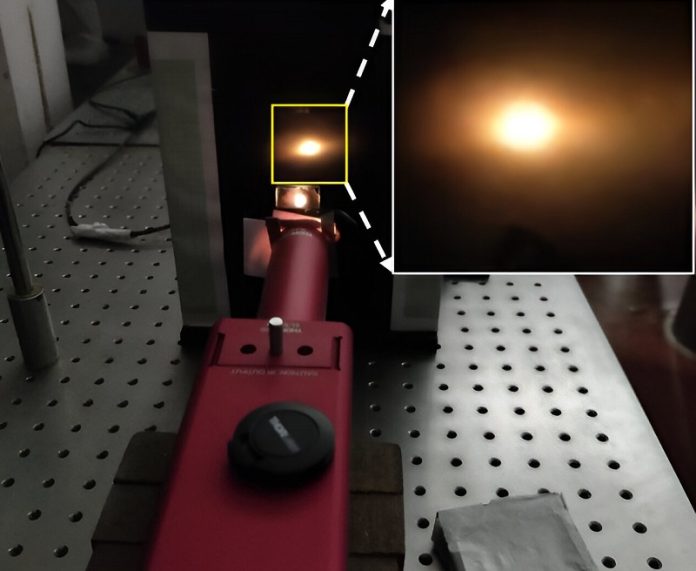
Metasurfaces, which are special two-dimensional materials, have the remarkable ability to manipulate how light and other electromagnetic waves behave.
These engineered surfaces can be used to improve the performance of various optoelectronic devices, like solar cells and LEDs, by enhancing how they interact with light.
A team of student researchers, led by Professor R. Vijaya at the Indian Institute of Technology Kanpur, has made an exciting breakthrough in this field.
They have developed a low-cost method to create flexible metasurfaces on a polymer substrate using a technique called soft lithography.
Their work, published in Frontiers of Optoelectronics, demonstrates how these innovative surfaces can be used to improve the efficiency of optoelectronic devices.
Metasurfaces are a type of metamaterial, which are artificial materials designed to have properties not found in nature.
Originally, metamaterials were made using metal-dielectric systems, but more recent advances have focused on all-dielectric metasurfaces, which are crucial for applications in optoelectronics.
These metasurfaces can influence how light is reflected, transmitted, or absorbed, making them highly valuable for improving the efficiency of devices like solar cells and LEDs.
The researchers at IIT Kanpur used a simple and cost-effective process to create their metasurfaces.
They started with a photonic crystal made by self-assembly, which has a nanometric feature size, and used it as a master pattern. This allowed them to create metasurfaces with two complementary shapes—nanodimples and nanobumps—on a flexible polymer substrate.
The resulting metasurfaces are thin, flexible, and can be easily applied to any smooth surface, making them versatile and practical for a wide range of applications.
The team tested different pattern sizes and depths to see how these factors affected the way light was scattered by the metasurfaces.
Their experiments showed that they could control the amount of haze, or the scattering of light, across the visible spectrum.
This ability to control haze is important because it can increase the amount of light absorbed by solar cells or the amount of light emitted by LEDs, thus improving their overall efficiency.
By scattering light more effectively, these metasurfaces can help overcome one of the key limitations in optoelectronic devices, which is the tendency of light to travel in a straight line.
By redirecting more light into the active regions of these devices, the metasurfaces can enhance the conversion of light into electricity in solar cells or boost the light output in LEDs.
The researchers also backed up their experimental results with simulations, which confirmed their findings.
This low-cost and flexible approach to creating metasurfaces opens up new possibilities for enhancing the performance of a wide range of optoelectronic devices, making them more efficient and potentially more affordable for everyday use.



